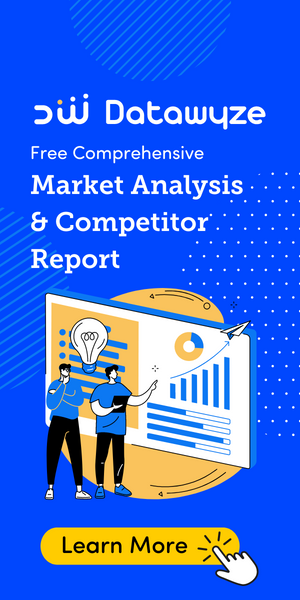Are you a B2B marketer struggling to reach your target audience through traditional marketing channels? Are you tired of spending endless hours and resources on advertising campaigns that fail to generate the desired results? If so, you’ll be pleased to learn that Bing’s LinkedIn Integration is the ultimate tool for boosting your online presence and reaching your ideal customers.
Bing has always been a popular platform for businesses to advertise their products and services. But with their integration of LinkedIn, the world’s largest professional networking site, Bing has become a game-changer for B2B marketers looking to connect with decision-makers and influencers in their industry.
In this article, we’ll explore the benefits of Bing’s LinkedIn Integration for B2B marketers, and how this innovative technology can help you achieve your marketing goals. We’ll also look at some practical tips and best practices for optimizing your Bing ads with LinkedIn data to drive traffic to your website, enhance your online reputation, and ultimately grow your business.
Bing’s LinkedIn Integration: A Powerful Combination for B2B Marketing
The integration of LinkedIn into Bing’s advertising platform has created a powerful combination for B2B marketers, allowing them to target their ads to specific LinkedIn audiences based on job title, industry, company size, and other factors. This means you can now create highly personalized campaigns that resonate with your ideal customers, resulting in higher click-through rates, conversion rates, and overall ROI.
For example, let’s say you’re a B2B software company targeting IT directors at mid-sized companies in the healthcare industry. With Bing’s LinkedIn Integration, you can create ads that specifically target this audience, using data from their LinkedIn profiles to create custom messaging and imagery that speaks directly to their pain points and needs. This not only improves the effectiveness of your ads but also enhances your overall brand reputation as a company that truly understands and cares about its customers.
Search Engine Benefits
One of the biggest advantages of Bing’s LinkedIn Integration is the search engine visibility it provides. By using LinkedIn data to create more targeted ads, you can improve your ad relevance score, which in turn increases your ad’s position. This means your ads will be more visible to your target audience, resulting in more clicks, conversions, and ultimately, more revenue for your business.
Moreover, Bing is constantly working on improving its algorithms and delivering more relevant results to users. As such, if you have a high ad relevance score, it is likely that your ads will not only appear at the top of the search results but will also have a higher chance of being clicked on. This means that by optimizing your Bing ads with LinkedIn data, you’re not only driving more traffic to your website, but you’re also improving your overall search engine visibility.
Online Advertising and Social Media Marketing
Bing’s LinkedIn Integration also enables B2B marketers to take advantage of the latest trends in online advertising and social media marketing. With the rise of social media platforms like LinkedIn, Facebook, and Twitter, it’s becoming increasingly important for businesses to have a strong presence on these channels in order to reach and engage with their ideal customers.
By integrating LinkedIn data into Bing ads, you can leverage the power of social media marketing to create highly targeted campaigns that speak directly to your audience’s interests, preferences, and behaviours. This not only helps you attract more customers but also enhances your overall brand reputation as a thought leader in your industry.
Digital Marketing and Microsoft Advertising
Another key benefit of Bing’s LinkedIn Integration is its ability to integrate with Microsoft Advertising, Microsoft’s online advertising platform. This means you can now create highly targeted campaigns that reach your ideal customers across a variety of digital channels, including Bing, LinkedIn, and other Microsoft-owned properties.
With Microsoft Advertising, you can take advantage of a range of advanced targeting options, including location targeting, device targeting, and demographic targeting, to create campaigns that deliver the right message to the right people at the right time. This not only improves the effectiveness of your ads but also enhances your overall digital marketing strategy, resulting in higher ROI and greater business growth
Paid Search and B2B Marketing
Bing’s LinkedIn Integration is particularly valuable for businesses that rely on paid search to drive traffic to their website. With the ability to create highly targeted ads that resonate with your ideal customers, you can significantly improve the effectiveness of your paid search campaigns, resulting in higher click-through rates, conversion rates, and overall ROI.
In addition, paid search is an important component of business-to-business marketing, as it allows companies to reach decision-makers and influencers in their industry. With Bing’s LinkedIn Integration, you can create ads that specifically target these individuals, using data from their LinkedIn profiles to create custom messaging and imagery that speaks directly to their needs and preferences. This not only improves the effectiveness of your ads but also enhances your overall brand reputation as a thought leader in your industry.
Best Practices for Optimizing Your Bing Ads with LinkedIn Data
Now that we’ve explored the benefits of Bing’s LinkedIn Integration for B2B marketers, let’s take a look at some practical tips and best practices for optimizing your Bing ads with LinkedIn data.
Use LinkedIn Data to Create Highly Personalized Ads
One of the biggest advantages of Bing’s LinkedIn Integration is the ability to create highly personalized ads that resonate with your target audience. Use data from LinkedIn profiles to create custom messaging, imagery, and calls-to-action that speak directly to your audience’s needs and preferences.
For instance, if you’re a B2B marketer promoting an HR software tool, you can leverage LinkedIn data to create ads that target HR managers in the manufacturing industry. You can also personalize your messaging to highlight your software’s features that cater to their industry-specific needs.
Leverage LinkedIn Targeting Options
Take advantage of LinkedIn targeting options to create ads that reach your ideal customers based on factors such as job title, industry, company size, and location. This not only improves the effectiveness of your ads but also enhances your overall brand reputation as a company that truly understands and cares about its customers.
LinkedIn targeting options include:
Job title targeting:
Target your ads to people with specific job titles such as CEO, CTO, or CFO.
Industry targeting:
Target your ads to people who work in specific industries such as healthcare, education, or finance.
Company size targeting:
Target your ads to companies with a specific number of employees, such as small businesses or large corporations.
Location targeting:
Target your ads to people who live or work in specific geographic locations, such as a city, state, or country.
Use Bing’s Audience Network
Bing’s Audience Network is a powerful tool for reaching a wider audience of potential customers. Use data from LinkedIn profiles to create custom audiences that match your target demographic, and then use Bing’s Audience Network to reach those audiences across a variety of digital channels.
Bing’s Audience Network allows you to reach audiences across a range of Microsoft-owned properties, including MSN, Outlook.com, and Microsoft Edge. You can also use Bing’s Universal Event Tracking (UET) to track the performance of your ads across the Audience Network and adjust your campaigns accordingly to maximize your results.
Monitor Your Ad Performance
Keep a close eye on your ad performance to ensure that your campaigns are delivering the desired results. Use Bing’s reporting tools to track key metrics such as click-through rates, conversion rates, and overall ROI, and adjust your campaigns accordingly to maximize your results.
Test and Iterate
Finally, don’t be afraid to test and iterate your Bing ads to find the messaging, imagery, and targeting options that work best for your audience. Use A/B testing and other optimization techniques to continually improve your campaigns and drive better results over time.
Conclusion
Bing’s LinkedIn Integration is a game-changer for B2B marketers looking to reach their ideal customers and grow their businesses. By using LinkedIn data to create highly personalized ads, you can improve the effectiveness of your campaigns, enhance your online reputation, and ultimately drive more revenue for your business.
To learn more about how Bing’s LinkedIn Integration can help you achieve your marketing goals, contact Datawyze, a leading digital marketing agency that specializes in helping B2B companies grow their business through cutting-edge technology and proven marketing strategies.
At Datawyze, we’re passionate about using innovative technology to help our clients achieve their marketing goals. Recently, we worked with an outdoor lifestyle and patio furniture brand to create a highly effective Bing Local Inventory Ads campaign that drove foot traffic to their brick-and-mortar showroom.
Using Bing’s powerful targeting options and local inventory feed, we created a campaign that specifically targeted people searching for outdoor patio furniture in the local area. We also used custom messaging and imagery to highlight the unique features of our client’s store and products, enticing users to visit their showroom.
The campaign was a huge success, resulting in a significant increase in foot traffic to our client’s store and a corresponding increase in sales. To learn more about this case study and how we can help you achieve similar results for your business, download and read our case study today.





